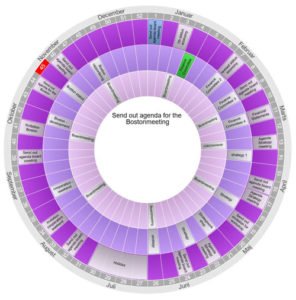PLANDISC offers a fantastic tool that can easily adapt to the everyday needs of the business. With project lifecycle management every company can manipulate the system to accommodate a number of business needs. There is planning cycle template of PLANDISC that will allow businesses to create a number of different goals and they can change each template to add a variety of layers. There can be information added from different data files to help track and input items into the system for easier tracking. Also, by using an annual operating plan every business will be able to make a year long list of goals that they can adjust as they need to reach their goals.
Businesses Can Manipulate a Planning Cycle Template to Do Many Tasks
Firstly, a business can make PLANDISC’s application work in a number of ways including scheduling their staff. One application template can be set up to schedule up to one year for employees. With an annual operating plan every company can make scheduling decisions for complete one year and can also monitor previous years staffing problems to help adjust for the coming year. Different data files can be added onto the chart to help keep track of employee scheduling requests and different departmental staffing needs all in one easily accessible online database.
Finally, any company can set up a variety of goals on a planning cycle template. They can monitor profit, sales, donations, inventory, and a vast number of other goals or requirements with one simple online tool. The project lifecycle management tool can do a number of things within one or multiple different styles of templates. Each item can be added to larger template to help consolidate into one tracking system.
Data Handling with the Project Lifecycle Management Tool
Every business will be able to monitor their information online through the project lifecycle management tool because the application is kept strictly online. By allowing multiple employees the ability to log on under their own credentials, data can be added on the spot instead of having to be submitted to a specific employee to enter the information later.
Therefore, data will be entered more quickly as it becomes available to any employee directly involved. For businesses with departments, the department heads can also be allowed access to input and monitor data. By doing this, a quicker collection of data for business can be made possible.

